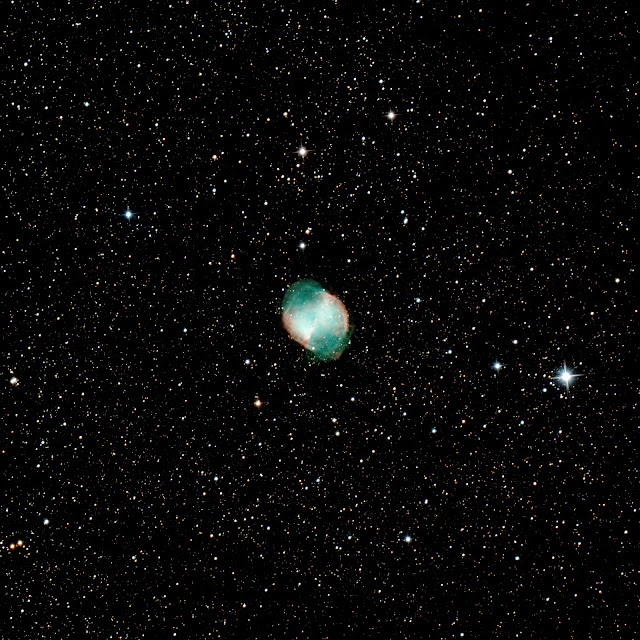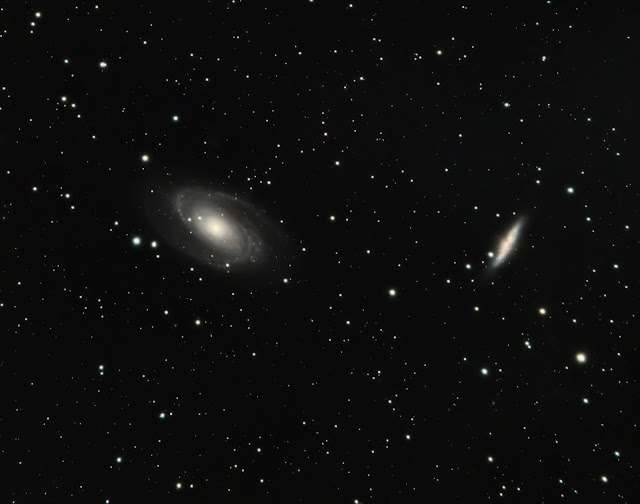"To the eye, this cosmic composition nicely balances the Bubble Nebula at the upper right with open star cluster M52. The pair would be lopsided on other scales, though. Embedded in a complex of interstellar dust and gas and blown by the winds from a single, massive O-type star, the Bubble Nebula (aka NGC 7635) is a mere 10 light-years wide. On the other hand, M52 is a rich open cluster of around a thousand stars. The cluster is about 25 light-years across. Seen toward the northern boundary of Cassiopeia, distance estimates for the Bubble Nebula and associated cloud complex are around 11,000 light-years, while star cluster M52 lies nearly 5,000 light-years away."
------
Likely the best I can do with the L-Pro filter.
Technical Info:
Optics: SGO 6" f/4 Imaging Newtonian @ 610mm FL
Explore Scientific 2" HR Coma Corrector
Camera: ZWO ASI533MC Pro
Filter: 2" Optolong L-Pro
Mount: Losmandy GM8
Guiding: QHY Mini Guide Scope + PHD2 Software
Acquisition: Sequence Generator Pro
Exposure: Light (Gain 200) - 130 subs @ 120 Seconds
Calibration: 50 Bias, 30 Darks, 50 Flats
Temperature: 17 C
Camera Temperature: -10 C
Bortle: 7/8
Processing:
- Deep Sky Stacker
- Adobe Photoshop
- Topaz Denoise AI
- Astronomy Action Set plug in for PS
- Astro Flat Pro plug in for PS




















